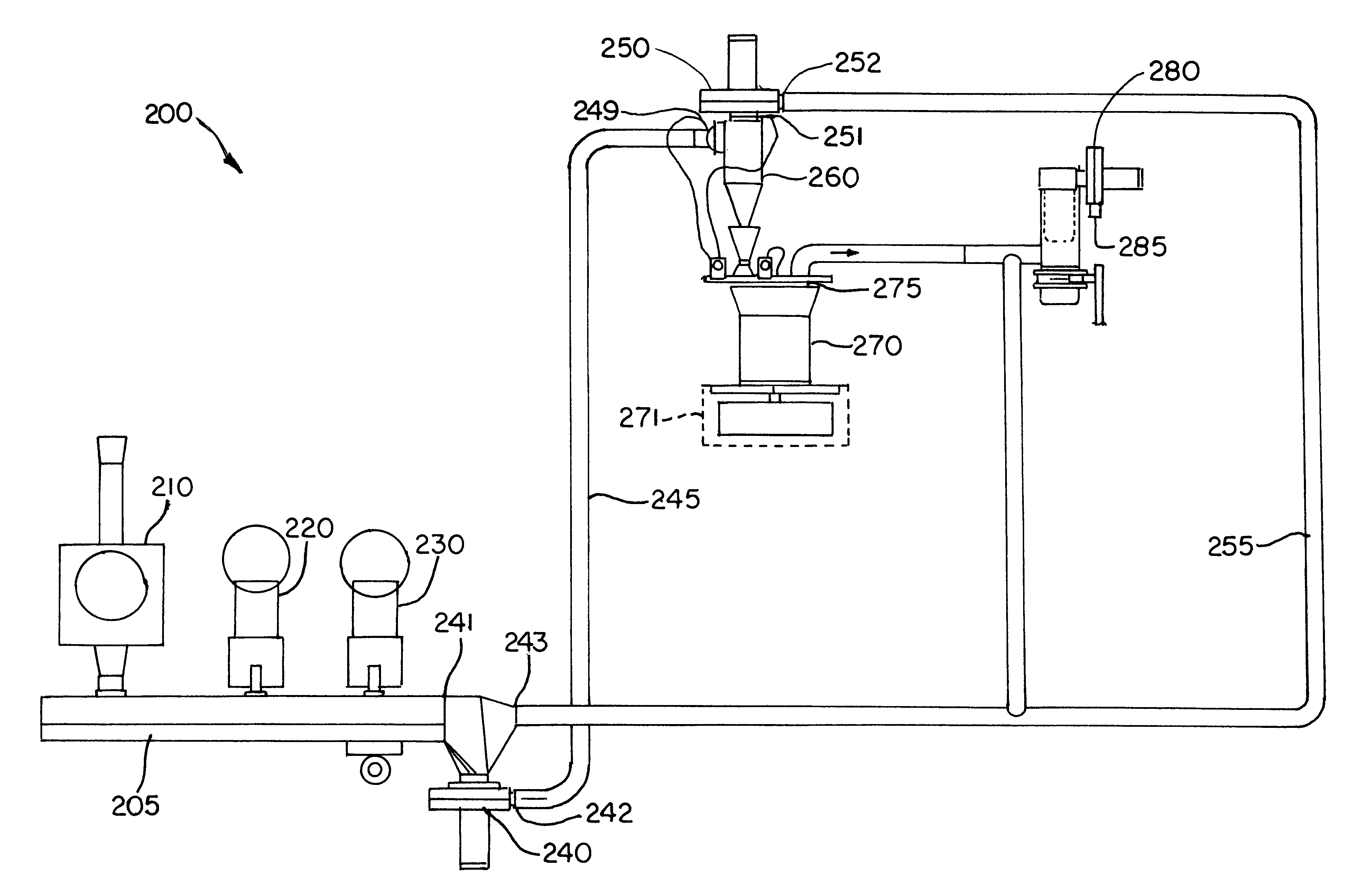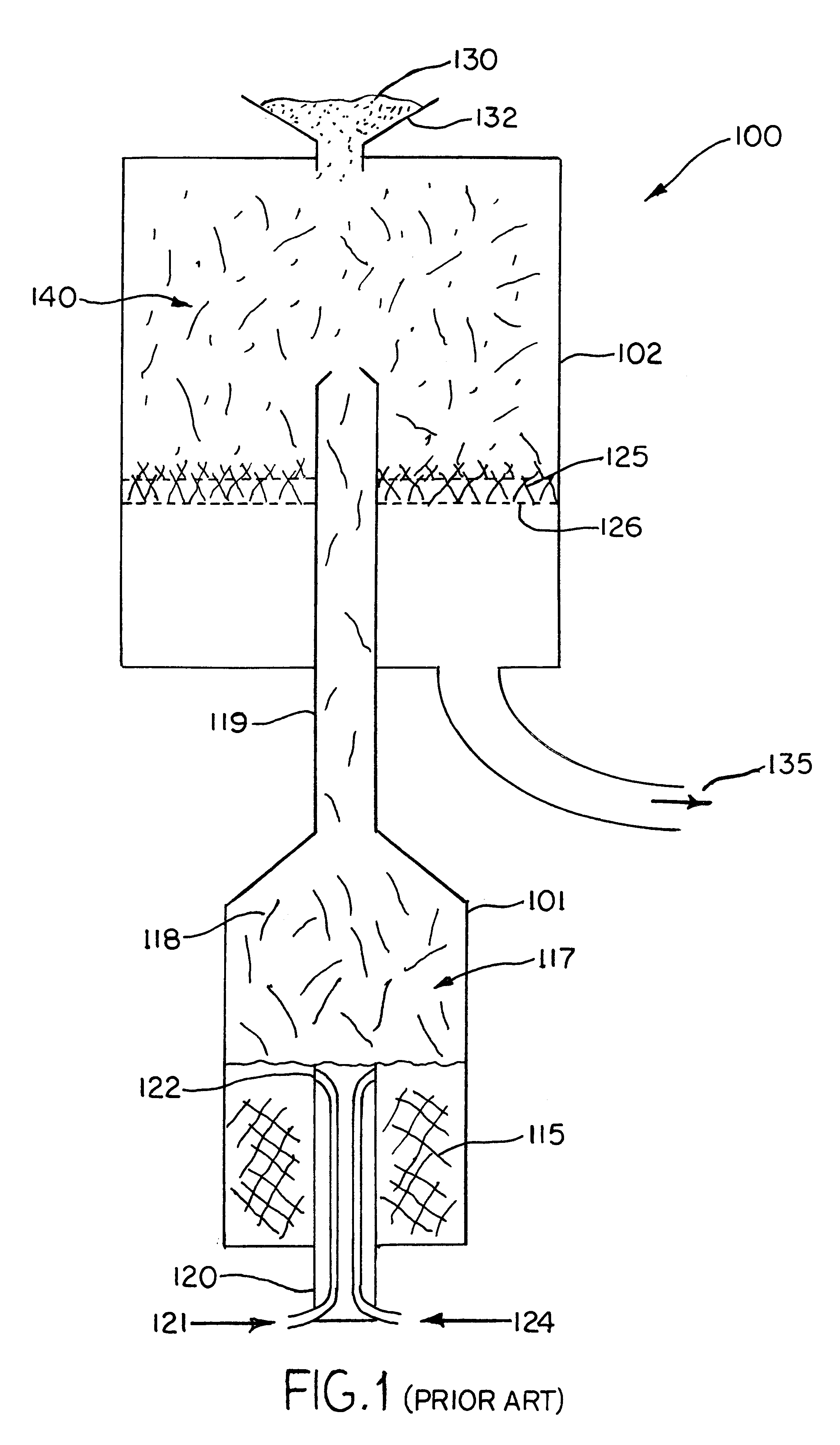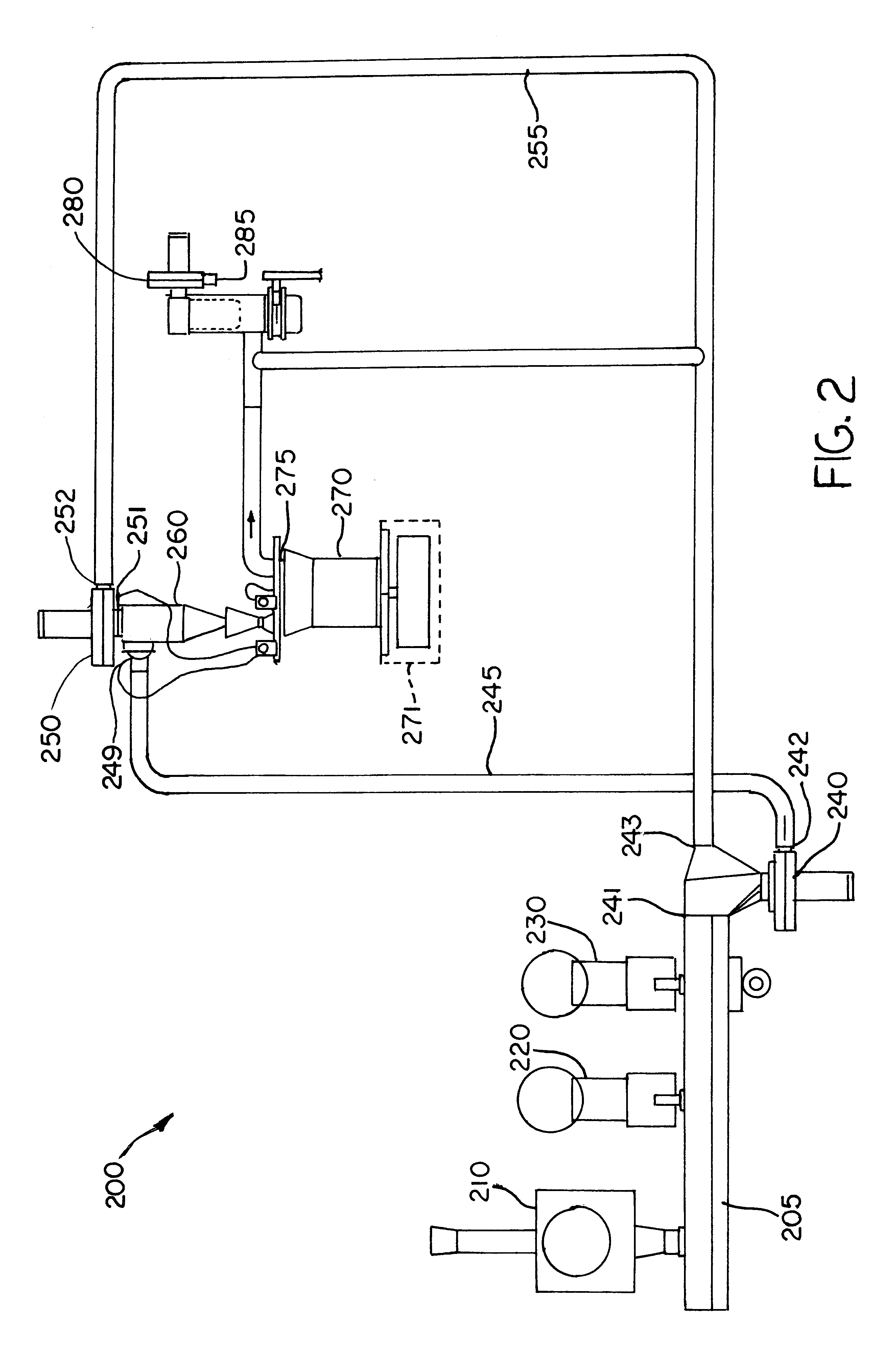Method for forming fiber reinforced composite parts
a fiber reinforced composite and composite part technology, applied in the direction of friction lining, transportation and packaging, other domestic articles, etc., can solve the problems of long manufacturing process, slow process, time-consuming process,
- Summary
- Abstract
- Description
- Claims
- Application Information
AI Technical Summary
Problems solved by technology
Method used
Image
Examples
Embodiment Construction
Several test parts were fabricated using the above method and apparatus, specifically nine (9) stator and six (6) rotor-size parts for 767 aircraft made by the BOEING Corporation. For a stator, 3.976 pounds (1807 g) of 1-inch (2.54 cm) chop length carbon fiber (grade X9755) and 1.454 pounds (661 g) of milled carbon fiber (grade 341, each grade of fibers marketed by FORTAFIL), and 7.176 pounds (3262 g) of AR mesophase pitch resin (pellets ground into powder) marketed by the MITSUBISHI Gas Chemical Corporation were dispensed onto a belt conveyer over approximately a thirteen (13) minute period (a total of 12.606 pounds or 5723 g of "mixed material" was deposited in the mold over the time period to form a preform). The material handling fan was operating at 80% of the maximum motor speed, the return air fan at 37% of maximum motor speed and dust collector fan at 60% of maximum motor speed. The mold was located at a 2.5 inch (6.35 cm) linear position from the centerline of the cyclone d...
PUM
| Property | Measurement | Unit |
|---|---|---|
| length | aaaaa | aaaaa |
| densities | aaaaa | aaaaa |
| length | aaaaa | aaaaa |
Abstract
Description
Claims
Application Information
 Login to View More
Login to View More - R&D
- Intellectual Property
- Life Sciences
- Materials
- Tech Scout
- Unparalleled Data Quality
- Higher Quality Content
- 60% Fewer Hallucinations
Browse by: Latest US Patents, China's latest patents, Technical Efficacy Thesaurus, Application Domain, Technology Topic, Popular Technical Reports.
© 2025 PatSnap. All rights reserved.Legal|Privacy policy|Modern Slavery Act Transparency Statement|Sitemap|About US| Contact US: help@patsnap.com



